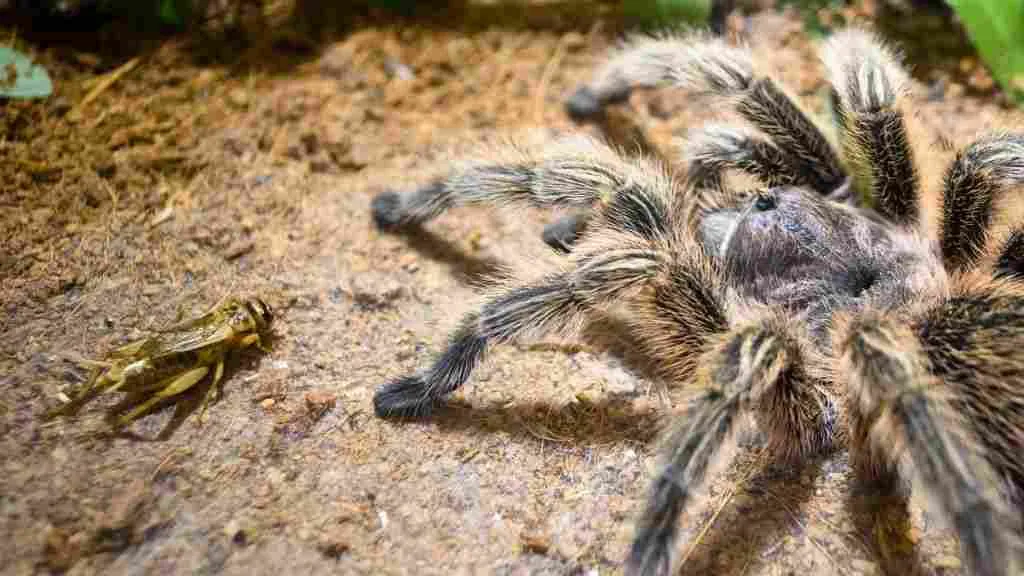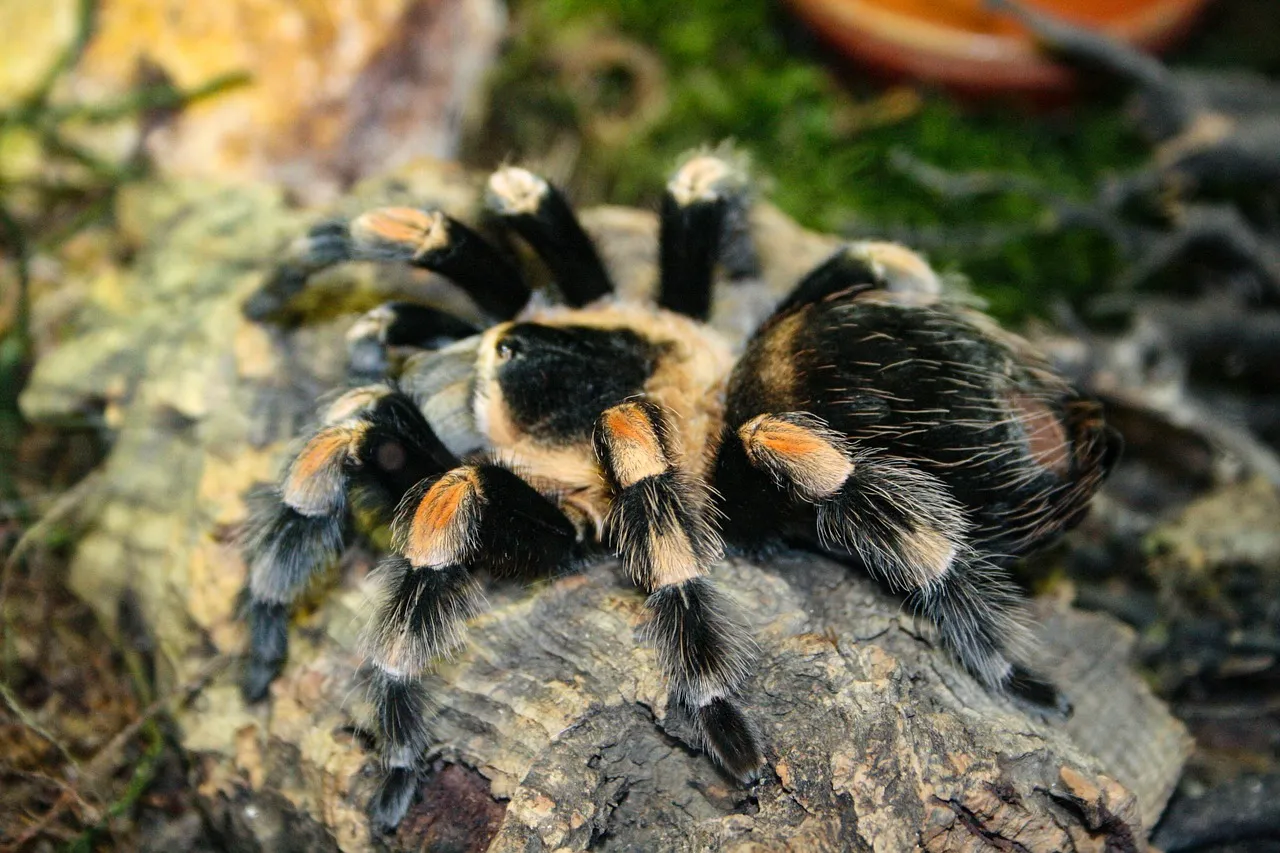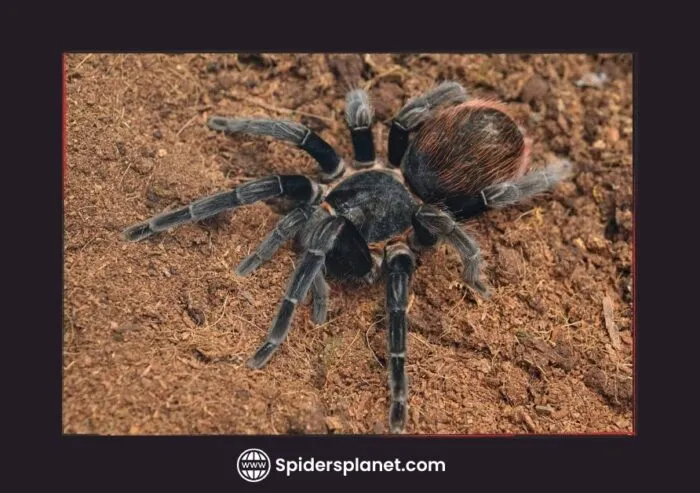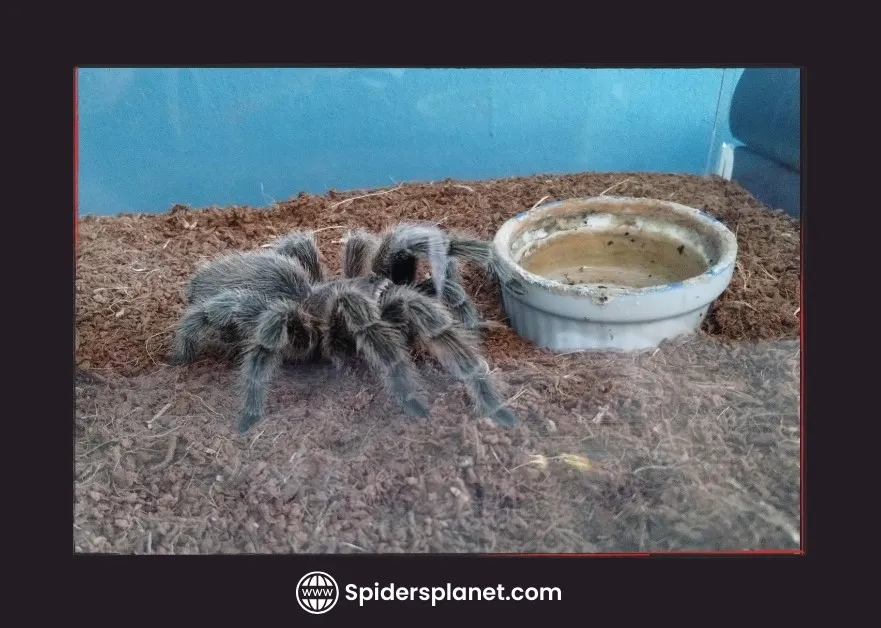Why Tarantulas Stop Eating
Discovering that your tarantula won’t eat for weeks can be a concerning experience for any pet owner. Several factors can contribute to this behavior, and understanding these reasons is the first step towards addressing the issue. Tarantulas, like all living creatures, have specific needs and cycles that influence their appetite. It is crucial to observe your tarantula closely and monitor its environment to identify the underlying cause. This article will explore the various reasons why tarantulas may stop eating, from environmental factors to health issues, providing you with the knowledge to support your pet’s well-being and ensure they return to their regular feeding habits. Addressing this issue promptly is key to maintaining the health and happiness of your tarantula, allowing you to enjoy the unique experience of owning these fascinating creatures.
Environmental Factors [Temperature and Humidity]
The environment your tarantula lives in plays a critical role in its health and feeding behavior. Both temperature and humidity levels need to be within an appropriate range for your tarantula to thrive. Incorrect environmental conditions can stress the tarantula, leading to a loss of appetite or even more serious health issues. As a responsible tarantula owner, monitoring these factors and making adjustments when necessary is essential. Ensuring optimal conditions not only encourages healthy eating habits but also contributes to the overall well-being of your pet, allowing it to live a long and fulfilling life. Remember, a happy tarantula is a healthy tarantula, and the right environment is the cornerstone of its well-being.
Temperature Regulation

Tarantulas are ectothermic, meaning they rely on external sources to regulate their body temperature. They thrive in a specific temperature range, typically between 75 to 85 degrees Fahrenheit (24 to 29 degrees Celsius). Temperatures outside this range can negatively impact their metabolism and appetite. Too cold, and the tarantula’s digestive processes slow down, leading to a disinterest in food. Too hot, and they may become stressed, also affecting their willingness to eat. Using a reliable thermometer to monitor the enclosure temperature is critical. If the temperature is not within the ideal range, adjustments may be needed. This might involve using a heat mat (under the enclosure, not inside), adjusting the room temperature, or providing better ventilation. Maintaining the correct temperature is vital for your tarantula’s health and feeding behavior, allowing them to thrive and enjoy their meals.
Humidity Control
Humidity is just as important as temperature for a tarantula’s well-being. The required humidity level varies depending on the species, but generally, most tarantulas need humidity levels between 60% and 80%. Low humidity can lead to dehydration, making it difficult for the tarantula to eat and digest food. High humidity, on the other hand, can promote the growth of mold and bacteria, creating an unhealthy environment. To maintain the correct humidity, use a hygrometer to measure the moisture levels in the enclosure. Regular misting with a spray bottle, ensuring a water dish is always full, and providing proper ventilation are all ways to control humidity. Monitoring and maintaining the appropriate humidity level helps keep your tarantula healthy and encourages its natural feeding habits. By creating the right environment, you’re ensuring your tarantula’s health and happiness.
Molting Process and Appetite Loss
Molting is a natural process for tarantulas, during which they shed their exoskeleton to grow. During this time, it is common for tarantulas to stop eating. The molting process can be physically demanding, and the tarantula will often conserve energy by abstaining from food. Understanding this behavior and knowing the signs of an upcoming molt can help you avoid unnecessary worry and provide the right care during this crucial period. This knowledge empowers you to support your tarantula through this natural process, allowing it to grow and thrive. Observing your pet closely and recognizing the signs of molting will help you provide the necessary support for a successful molt.
Signs of an Upcoming Molt

Several signs can indicate that your tarantula is preparing to molt. The tarantula’s abdomen may appear darker or swollen, and it might become less active, spending more time in a hide or burrow. They might also refuse food, and their appetite may decrease significantly. Before molting, tarantulas will often create a web mat or a bed of silk in their enclosure. The skin on their abdomen might appear stretched, and the colors of the tarantula might become dull. Recognizing these signs can help you prepare for the molt and avoid offering food, as the tarantula will not eat during this period. Providing a quiet, undisturbed environment during the molt is vital. Understanding these signals lets you support your pet during its molting cycle.
Post-Molt Feeding
After a successful molt, the tarantula’s exoskeleton is initially soft and vulnerable. It is crucial to wait a few days before offering food, giving the tarantula time to harden its new exoskeleton. Starting with smaller, easily digestible prey is recommended. Observe your tarantula’s behavior and appetite after the molt. They will usually begin to eat again when they feel ready. Provide a variety of food options and monitor their feeding habits to ensure they are recovering well. Patience and observation are key during this phase, allowing your tarantula to resume its normal feeding behavior. Proper care after molting is essential for the tarantula’s overall health and growth.
Prey and Feeding Habits
The type of prey you offer and your tarantula’s feeding habits play a significant role in their willingness to eat. Choosing the right prey and feeding frequency are crucial aspects of tarantula care. Providing a diverse and appropriate diet keeps your tarantula healthy and encourages natural feeding behaviors. Understanding these aspects allows you to provide the best possible care for your pet, leading to a happy and thriving tarantula. By observing your tarantula’s preferences and behaviors, you can tailor its diet to meet its specific needs, ensuring it remains healthy and active.
Choosing the Right Prey

A varied diet is essential for your tarantula’s health. Common prey options include crickets, mealworms, dubia roaches, and other insects. The size of the prey should be appropriate for your tarantula, generally no larger than the tarantula’s body size. It’s crucial to gut-load the prey with nutritious food before feeding them to your tarantula. This means feeding the insects a diet rich in vitamins and minerals, which are then passed on to your tarantula. Avoid wild-caught insects, as they can carry parasites or pesticides harmful to your pet. Regularly change the type of prey offered to prevent dietary deficiencies and keep your tarantula interested in feeding. Providing a variety of appropriately sized, gut-loaded prey is vital for your tarantula’s health and well-being. A well-balanced diet contributes significantly to their overall health and vitality.
Feeding Frequency and Quantity
Feeding frequency depends on the tarantula’s age, species, and metabolism. Spiderlings typically need to be fed more often, sometimes several times a week, while adult tarantulas may eat only once a week or even less. Observe your tarantula’s behavior and body condition to determine the right feeding schedule. Overfeeding can lead to health problems, while underfeeding can cause nutritional deficiencies. Offer a single prey item or two at a time, allowing your tarantula to consume what it needs. Remove any uneaten prey after 24 hours to prevent them from stressing the tarantula or causing injury. Monitoring your tarantula’s appetite and body condition helps you fine-tune their feeding schedule. Balancing the frequency and quantity of food is vital for your tarantula’s health and happiness.
Health Concerns and Parasites
Sometimes, a tarantula’s refusal to eat is related to underlying health issues or the presence of parasites. Recognizing the signs of illness and taking appropriate action can be critical in ensuring your tarantula’s well-being. Understanding these potential health problems empowers you to provide the best possible care for your pet, ensuring they can live a long and healthy life. Regular observation, proper husbandry, and prompt action are essential in managing any health concerns that may arise. By staying informed and vigilant, you can keep your tarantula happy and healthy.
Identifying Illness in Tarantulas

Several signs may indicate that your tarantula is sick. These include lethargy, loss of coordination, unusual postures, and discoloration. A swollen abdomen, difficulty molting, or the presence of mites can also signify a health problem. If you notice any of these symptoms, it’s important to consult with a veterinarian experienced in exotic animals or a tarantula expert. Early detection and treatment are crucial to ensure the best possible outcome for your tarantula. Be vigilant in observing your tarantula’s behavior and appearance. Identifying potential health issues early can make a significant difference in your pet’s health and longevity. Knowing the signs of illness enables you to respond promptly and seek necessary veterinary care.
Parasite Prevention and Treatment
Parasites, such as mites, can also cause a tarantula to stop eating. These tiny creatures can infest the tarantula’s exoskeleton and cause significant discomfort. Regular inspection of the tarantula and its enclosure is essential for parasite prevention. If you suspect a parasite infestation, isolate the affected tarantula and consult with a veterinarian or expert. Treatments may include improving the enclosure’s hygiene, using specific insecticides, or in severe cases, professional veterinary intervention. Parasite infestations can be stressful for tarantulas, so early detection and treatment are key to keeping your pet healthy. Maintaining a clean environment and inspecting your tarantula regularly will significantly reduce the risk of parasite infestations. Prompt action protects your tarantula from suffering and ensures their well-being.
Creating a Healthy Environment for Your Tarantula
Creating and maintaining a healthy environment is essential for your tarantula’s overall well-being and feeding behavior. This includes providing the right temperature, humidity, substrate, and hiding places. A well-maintained enclosure minimizes stress and encourages your tarantula to eat regularly. Understanding the specific needs of your tarantula species and implementing appropriate care practices are fundamental to their health. A healthy environment contributes significantly to your tarantula’s longevity and happiness. By paying attention to the details and providing a comfortable and safe habitat, you’re ensuring your pet thrives. This attention to the details will reward you with a healthy and happy tarantula.
In conclusion, understanding why your tarantula won’t eat for weeks involves a comprehensive approach that addresses environmental factors, molting cycles, prey selection, and potential health concerns. By closely monitoring your pet, providing the right conditions, and being aware of common issues, you can effectively support your tarantula’s health and encourage healthy eating habits. Remember, patience and observation are key. If you have any concerns, consulting with an expert is always advisable. Your dedication to providing the best care will help your tarantula thrive and bring you years of enjoyment.
